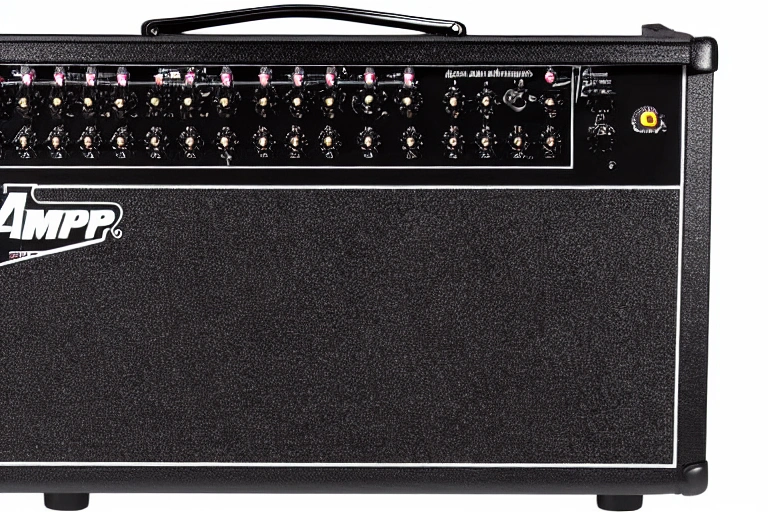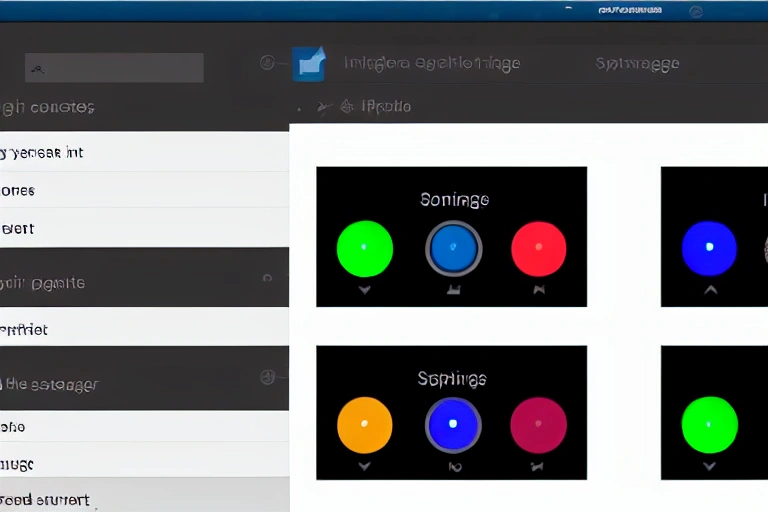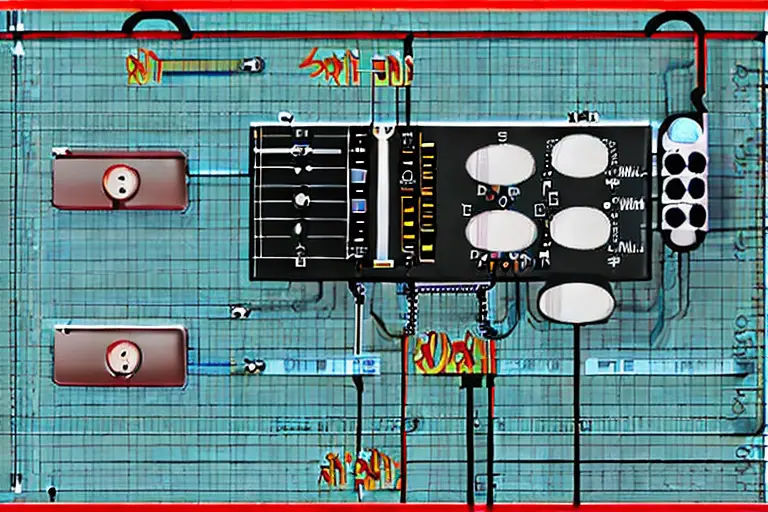If you’re in the music industry, chances are you’ve heard about amp simulators. But what are they, exactly? Amp simulators are software programs that allow you to emulate the sound of a real guitar amplifier with your computer. In this post, we’ll take a look at how to make the most out of amp simulators and get the best possible sound from them. Read on to find out more!
Table of Contents

Understanding the Basics of Amp Simulators
The basics of amp simulators are simple: they allow you to create and simulate the sounds of real-world amps and pedals. Amp simulators range in price and features, but all offer a simple way to get precise, realistic soundscapes without ever having to touch an electric guitar or bass. There are a few things to keep in mind when choosing an amp simulator: first, what style of music do you want to play? Do you want to emulate the distortion and fuzz tones of rock ‘n’ roll, the warm acoustic tones of blues or country music, or something completely different? Second, what type of guitarist are you? Are you comfortable playing with legato/soloing patterns or finger-style picking? An amp simulator that is best for shredding solos might not be ideal for rhythm playing styles. Finally, how much time do you have available to spend on your project? Some amp simulators require hours upon hours of painstaking tweaking before they’re ready for use; others are “plug-and-play” products that can be used virtually instantaneously. Choose wisely!
Keep in mind that each person’s hearing is unique – some people may find certain types of distortion particularly pleasing while others may not – so it’s important to experiment with different amp simulators until you find one that offers sounds that appeal to you. There really is no wrong choice when it comes to using an amp simulator – as long as your ears are happy!

Choosing the Right Amp Simulator for Your Needs
When choosing an amp simulator, it’s important to understand the basics of how they work. Amp simulators reproduce the sound of real amps, allowing you to create realistic guitar sounds without having to purchase or build an actual guitar.
There are a few different types of amp simulators available, each with its own unique features and capabilities. It’s important to choose the right one for your needs, as not all amp simulators are created equal. Here are some tips for choosing the right amp simulator:
-
Consider your budget. Amp simulators range in price from free to several hundred dollars. It’s important to choose the one that’s right for your needs and budget, as not all amp simulators are equal in terms of features and capabilities.
-
Consider your music style. Amp simulators can be used for a variety of music styles, from blues to metal. It’s important to choose the one that will best suit your music style and playing style.
-
Consider your playing style. Various playing styles can be used from blues to metal. It’s important to choose the one that will best suit your playing style and musical goals.
-
Consider your hardware setup. Amp simulators require a computer with a sound card and an internet connection, though some models also work with standalone hardware setups. It’s important to consider your hardware setup before making a purchase decision.
-
Consider your musical goals. Amp simulators can be used for a variety of musical goals, from learning how to play guitar or bass without buying an instrument to creating professional-grade recordings without any additional equipment or training. It’s important to consider your musical goals before making a purchase decision.

Tips for Optimizing Your Amp Simulator Settings
When it comes to amp simulators, there are a few things to keep in mind. First and foremost, make sure you choose the right one for your needs. There are a variety of different amp simulators on the market, so it can be difficult to decide which is right for you.
Once you have chosen an amp simulator, it’s important to optimize your settings. This will allow you to get the most out of your simulator and create realistic sounds. There are a number of different settings you can tweak, so be sure to experiment to find what works best for you.
Enfin, amp simulators can be used in conjunction with other plugins and effects to create even more realistic sounds. Be sure to explore all of your options to get the most out of your simulator experience.

Exploring the Different Types of Amp Simulators
There are many different types of amp simulators out there, each with its own benefits and drawbacks. It can be a bit overwhelming to figure out which one is right for you, but by following some tips, you’ll be able to find the perfect simulator for your needs.
First, it’s important to understand what features are important to you. Many amp simulators offer realistic sounds and effects, while others focus on realism over all else and may not offer as many variations or sound options. It’s also important to consider what type of music you want to emulate-punk rock might require a different simulator than country music.
Once you have an idea of what features are necessary for your specific needs, it’s time to look at available simulators. Guitar amps, bass amps, keyboards/synths/drum machines etc.- each with unique benefits and drawbacks that need to be weighed before making a purchase decision.
One common type of amplifier simulator is the software-based plugin. These plugins can be downloaded directly from the website or app store they were created on and accesses virtual amplifiers within the software itself (rather than through an external amplifier emulator). This gives users more control over their sounds compared to hardware-based amplifiers due in part to lower latency (the delay between when a note is played and when it appears in the output) as well as automation capabilities that permit greater modulation depth than hardware-based amplifiers allow for.
However these advantages come at a cost; many software based amplifier plugins do not offer realistic sound reproduction nor do they have support for multi-channel input so setting up multiple instances of the plugin can lead to complications mixing audio from multiple sources together within one instance of the plugin without overlap or issues.. In addition some software amp plugins only support certain brands or models of electric guitar while others include modeling capabilities for acoustic instruments such as pianos etc..
For example Ardent SoundWorks’ Amplitube 3 includes both electric guitar and bass amp simulations along with modeled cabinet emulation that accurately reproduces how various speakers would affect tone quality ie cab emulation allows wattage levels set inside Amplitube 3’s cabinet simulation tweak tab which assists players in achieving tones similar those heard through larger PA systems [source]. If general musical ability isn’t high on your list either performance or creative opportunities should factor into your selection processs [source].
Ultimately the best way to figure out if an amp simulator is right for you is to try it out. There are online and in-person amp simulators available that can be used for free or with small costs associated with them. Once you have tried out a few different types, you’ll be able to better understand which one is right for your needs.
Combining Multiple Amp Simulators for Maximum Effect
Utilizing Chain Routing to Blend Multiple Simulators
There are a number of ways to combine amp simulators to create the desired effect. One common technique is chain routing, in which one simulator is used as the main output and other simulators are blended in via a switch or pedal. Another approach is using multiple amps together in series or parallel, creating additional tone options unavailable with single amps. And finally, some users prefer to mix various simulation types altogether to get the most out of each type’s capabilities. There’s no wrong way to approach Amp Simulation; it just depends on what sound you’re looking for.
Making the Most of Parallel Processing
It’s no secret that amp simulators can be incredibly effective in improving your guitar-playing skills. But how do you make the most of them? One way is to combine multiple amps into one simulator, which will help you blend different sounds and techniques more effectively. Additionally, parallel processing can allow for even more realistic sound reproduction. So whether you’re looking to up your musical game or just want to improve your tone, an amp simulator is a great way to start!
Crafting Your Own Customized Amps with a Combination of Simulators
Different amps can produce vastly different sounds, so it’s important to have a range of amp simulators at your disposal if you want to get the most out of your guitar playing. However, even with a wealth of amp sims at your disposal, not every guitar sound will be achievable with just one simulator. To get the most out of your amp simulations and achieve the nuanced tones you’re after, it’s important to combine multiple amps into one virtual chain. This way, you can fine-tune each simulation until they all produce the desired results.
There are many ways to combine multiple amps into one virtual chain; some are simpler than others. If you’re on a Windows PC, for example, PowerAmp is a great tool for this. PowerAmp allows you to connect up to four amps to your computer and then uses a series of algorithms to simulate each one in turn. This means that you can get a great sense of the sound of each amp, without having to use multiple simulators.
If you’re using a Mac, AmpKit is a similar tool that also allows for multiple amp connections. However, AmpKit is more limited in terms of the types of amps that it can simulate, and it doesn’t offer as granular control over the sound as PowerAmp.
If you’re looking for a more comprehensive amp simulator, then Cubase SX is a perfect choice. Cubase SX comes with an extensive built-in amp library, as well as the ability to connect to external amps. This means that you can combine any type of amp into your virtual chain, and tweak them until they produce the desired sounds.
Once you’ve set up your virtual chain, it’s important to pay attention to the details. Every instrument will respond differently to different tone settings, so it’s important to experiment until you find what works best for you. With a little bit of effort and some good ol’ trial and error, you’ll be able to get the most out of your amp simulations and achieve genuinely unique guitar tones.
Maximizing Flexibility with Hybrid Setups
When it comes to creating your perfect sound, few things are as important as having the right amp simulator. And luckily, there are plenty of different simulators available to help you get the sound you’re looking for. However, not all simulators offer the same flexibility in terms of sonic shaping and editing. That’s where hybrid setups come in – they allow you to use multiple simulators simultaneously to maximize your creative potential.
For example, if you want to create a powerful heavy rock tone, you might start by using a metal amp simulator like Guitar Rig 2. This software will give you tons of control over thetones and distortion levels, allowing you to create a punishing mix that will sound great on guitars with high pickup pickups like an EMG. But if you want to add a little grit to the mix, you can switch over to a distortion amp simulator like Amplitube 3 and dial up the levels for added grit.
This is just one example of how hybrid setups can help you get the most out of your amp simulators. By using multiple simulators in combination, you’ll be able to create limitless sonic possibilities that would otherwise be impossible. So whether you’re looking to fine-tune your sound or explore new territory altogether, combine multiple amps simulators for maximum effect!

Taking Advantage of Third-Party Plugins and Effects
Utilizing Third-Party Plugins
Third-party plugins and effects can be a great way to add extra flexibility and functionality to your amp simulator. By using plugins and effects, you can create unique sounds that wouldn’t be possible with built-in amp simulators. There are many plugins and effects available, so it’s important to find the ones that fit your needs.
Some of the most popular third-party plugins and effects include reverbs, delays, and distortions. By using these plugins, you can create realistic-sounding environments that add depth and dimension to your music. It’s also important to note that many amp simulators come with built-in plugins and effects, so don’t feel limited by what’s available. Experiment with different plugins and effects to find the ones that work best for you.
Incorporating External Effects
Third-party plugins can vastly improve your amp simulator’s sound quality. By incorporating external effects, you can create truly unique sounds that weren’t possible with built-in effects. There are a number of plugin suppliers, so it’s important to do your research and find the ones that fit your specific needs.
One common technique is to use a compressor or limiter as an external effect since they will reduce the amplitude of peaks in the signal in order to increase its overall loudness. This can give you more control over how intense your clean tones and solos sound and add fatness and warmth to lead guitars and basslines.
Several popular plug-ins for this purpose include Verb Drums’ MixPre-6 and Universal Audio’s LA-2A, which are both available as free downloads.
Another common use for external effects is to add distortion to your clean tones. This can give them a heavier sound, as well as add grit and power to your solos. Some popular distortion plugins include Native Instruments’ Massive and fabfilter’s Pro-C, both of which are available for free download.
Finally, external effects can be used to create unique sounds that weren’t possible with the built-in effects of your amp simulator. By tweaking the parameters of your plugin, you can create sounds that are completely unique to your instrument and style. For example, you could add a chorus effect to your clean tone to create a warm, swelling effect. Whatever your needs, there’s a plugin out there that can help you achieve the sound quality and sonic expeditions you desire.
Maximizing Your Amp Simulators Performance
There are a lot of great amp simulators on the market, and each offers its own unique capabilities and features. But no matter which one you choose, it’s important to take advantage of all the third-party plugins and effects that come with it in order to get the most out of your simulator experience. This way, you can customize your sound precisely to your liking, creating truly custom-sounding virtual amps.
One great way to do this is by using external plugins. There are many quality plugins available for amp simulators, both free and paid versions, so it’s worth checking them out if you’re interested in expanding your sonic possibilities. Some popular choices include guitar processors like Amplitube or Voxengo Vintage Amp Emulator, as well as reverb, distortion, and other effects.
Another way to take advantage of amp simulators is to tweak the settings on your own. For example, you may want to adjust the gain or tone of your virtual amp to get a specific sound. Or you might try adjusting the simulator’s mic input sensitivity in order to increase its tonal accuracy when plugged into a real guitar amplifier. It’s all about experimenting and finding what works best for you!
Exploring Additional Features of the Simulator
Third-party plugins and effects can give your amp simulator a significant boost in performance. By exploring the available plugins and effects, you can tailor your amp simulator experience to fit your specific needs.
Some popular third-party plugins and effects include:
These plugins can be installed on your computer and used with amp simulators.
These plugins can be installed on your computer and used with amp simulators.
Plugins for virtual instruments: These plugins can be installed on your computer and used with amp simulators.

Getting Creative with Your Amp Simulator Sounds
There are a variety of ways to get creative with your amp simulator sounds. You can use plugins and effects to add extra depth and realism to your sounds, or you can experiment with different sound settings to create unique sounds. Here are some tips for getting the most out of your amp simulator sounds:
- Experiment with sound settings. Different sound settings can produce different sounds, so don’t be afraid to try different things out. You might be surprised by the results.
- Use plugins and effects. Amp simulators are great for creating realistic sounds, but they don’t always have the same sonic capabilities as real amps. Use plugins and effects to expand your sound palette and create unique sounds that you wouldn’t be able to achieve with just an amp simulator alone.
- Listen carefully. Pay attention to how each sound affects your overall mix, and experiment with different sound settings until you find the ones that work best for your music.
- Get creative. Amp simulators are great for creating realistic sounds, but they’re not limited to that format. Use them to create unique sounds that would be impossible with a real amp alone.
Amp simulators can be a great way to create unique and interesting sounds without having to invest in expensive hardware. With the right knowledge and tools, you can get the most out of your amp simulator and create amazing sounds. If you’re looking for more information on how to use amp simulators, be sure to check out our other content for more tips and tricks.


